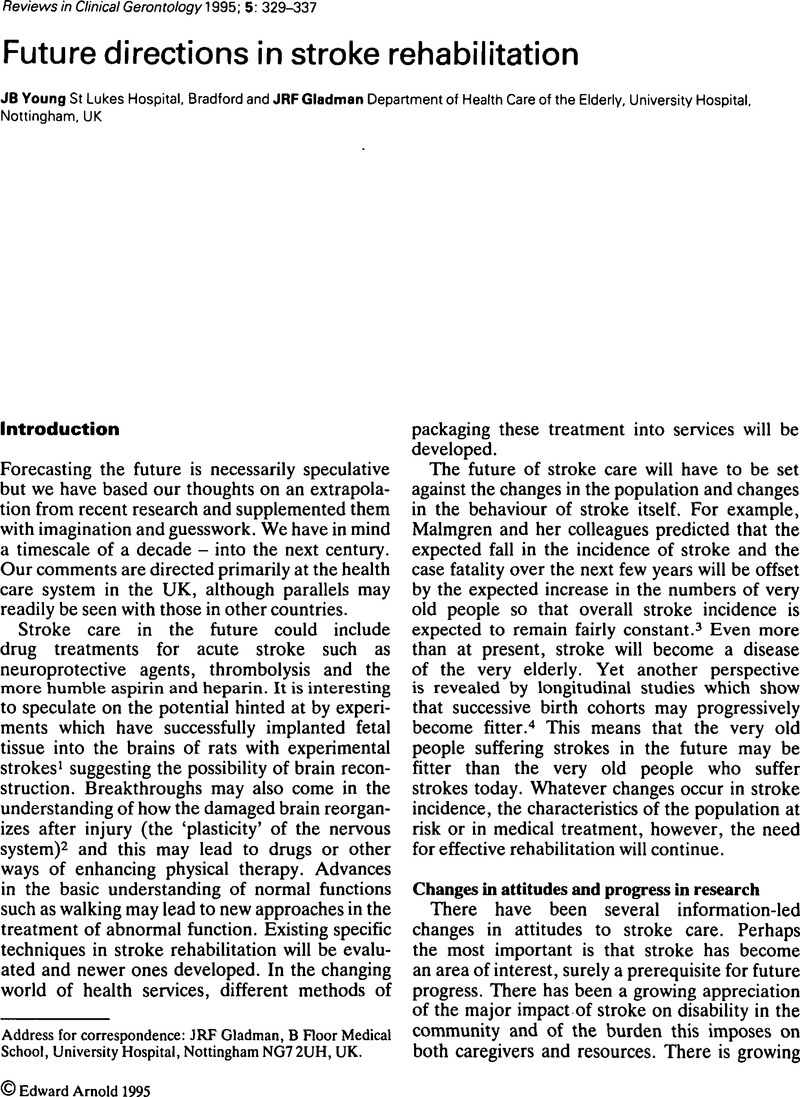Crossref Citations
This article has been cited by the following publications. This list is generated based on data provided by Crossref.
BRERETON, LOUISE
1997.
Preparation for family care‐giving: stroke as a paradigm case.
Journal of Clinical Nursing,
Vol. 6,
Issue. 6,
p.
425.
Nolan, Mike
and
Nolan, Janet
1998.
Stroke 1: a paradigm case in nursing rehabilitation.
British Journal of Nursing,
Vol. 7,
Issue. 6,
p.
316.
Nola, Mike
and
Nolan, Janet
1998.
Stroke 2: expanding the nurse's role in stroke rehabilitation.
British Journal of Nursing,
Vol. 7,
Issue. 7,
p.
388.
Green, John
Forster, Anne
and
Young, John
1999.
A survey of community physiotherapy provision after 1year post-stroke.
British Journal of Therapy and Rehabilitation,
Vol. 6,
Issue. 5,
p.
216.
Dowswell, George
Lawler, John
and
Young, John
2000.
Unpacking the ‘black box’ of a nurse-led stroke support service.
Clinical Rehabilitation,
Vol. 14,
Issue. 2,
p.
160.
Pryor, Julie
and
O’Connell, Beverly
2009.
Incongruence between nurses’ and patients’ understandings and expectations of rehabilitation.
Journal of Clinical Nursing,
Vol. 18,
Issue. 12,
p.
1766.



